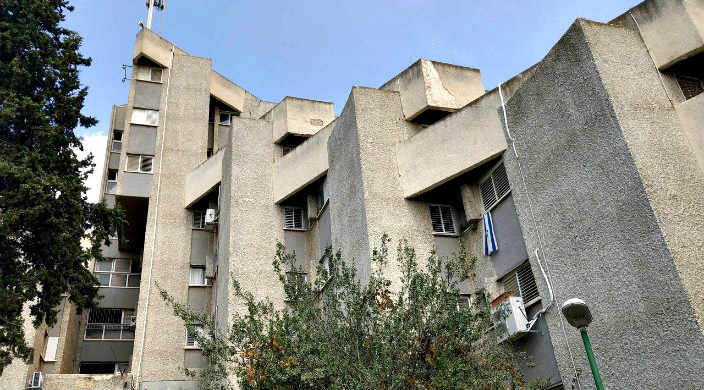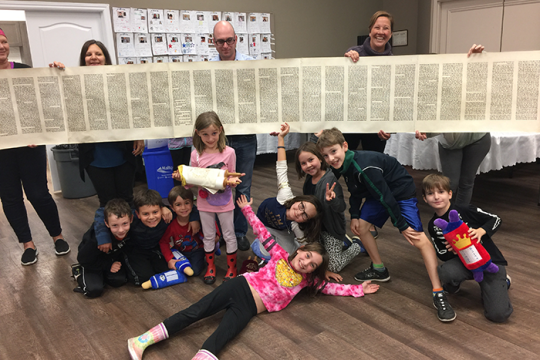
In a nondescript building in Nof HaGalil (a town in the north of Israel that until this year was called Nazareth Illit), 150 people – half of whom are children – are attempting to create societal transformation. These individuals, members of Kibbutz Mishol, are part of a burgeoning “urban kibbutz” movement.
Although the word “kibbutz” calls to mind isolated, agricultural settlements, now considered by some to be a part of Israel’s past, Kibbutz Mishol is no ordinary kibbutz. Urban kibbutzim such as Mishol pride themselves on being integrated into the city and focus on the values of socialist communal living rather than agriculture.
Housed in an eight-story building that previously was an immigrant absorption center, Kibbutz Mishol is easy to miss. Nothing on the outside of the building suggests that there is a kibbutz inside. In fact, had I visited Mishol just a few years ago, there would have been no building to visit at all! Although the kibbutz has existed for almost 20 years, its residents all moved in together only five years ago.
This timing strikes at the heart of the kibbutz ideology: unlike old kibbutzim, which revolved around a socialist collectivist relationship with land, agriculture, and physical space, Kibbutz Mishol focuses on values and people. Until the residents moved into their current space, they lived separately in various rented apartments throughout the city.
Moving in together signaled a return to the origins of the kibbutz movement. The original kibbutzim were built by small kvutzot, or groups. When a group got too big, it would split into two and one group would move to a new location to start a different settlement. Similarly, Kibbutz Mishol comprising small groups within the whole: Each floor in the building is its own kvutza, which makes decisions according to the needs of the floor’s residents.
In Nof HaGalil, the number of people on welfare is three times the national average, and the city’s population primarily is split between Russian-speaking secular Jews and Arab Israelis, both Christians and Muslims. Limited economic opportunity and ethnic conflict are among the issues that contribute to students’ difficult situations at home, meaning that, in addition to required studies, much of the school day focuses on reducing violence and resolving conflict.
Kibbutz Mishol is an educational kibbutz, so each day residents head to the elementary school, to after-school programs, and to other formal and informal educational organizations, where they help the city’s youth, fulfilling a dual objective to repair the self (tikkun atzmi) and repair the world (tikkun olam). The pursuit of tikkun atzmi leads them to the socialist ideals they live out each day at home, sharing what they have and building an intentional Jewish, Zionist, and socialist community. And their pursuit of tikkun olam leads them to engage with the community through education.
Other urban kibbutzim work on other issues important to the communities in which they live. In so doing, these urban kibbutzim overcome one of their criticisms of the original kibbutzim: In addition to attempting to create a utopian society, the latter ended up in the state-building business, preferring massive kibbutzim ruled by the majority instead of the small kvutzot model devoted to bettering the local area.
Visiting Kibbutz Mishol reminded me of what I think and hope Reform Jews set out to do each day.
Like the residents at Mishol, we try to live the values we preach, and in doing so, we better both ourselves and the world around us. The two pillars of tikkun atzmi and tikkun olam undergird our efforts as Reform Jews as we work to improve ourselves through prayer, study, and community and endeavor to improve the world through social action and social justice.
Although the day-to-day considerations and guiding ideology of Kibbutz Mishol may be different from what many of us know, that community works to live out the values it preaches, and its members endeavor to improve themselves – all at the same time. We should undertake such efforts, as well. It is not enough simply to pray or celebrate holidays, nor is it enough to engage in social justice. Rather, as Reform Jews, we must do them together because when we hold both in our realm, they strengthen each other. My prayer and study make my social justice endeavors more meaningful just as my social justice work provides purpose to my tikkun atzmi.
As Rosh HaShanah approaches, it is fitting that my visit to Kibbutz Mishol is helping me recommit to both tikkun olam and tikkun atzmi – and to living out the values I know are central to me as a Reform Jew.
Interested in learning more about communal living opportunities in Israel? Check out Mechina, a post-high-school, gap-year program offered by the Israel Movement for Reform and Progressive Judaism.




